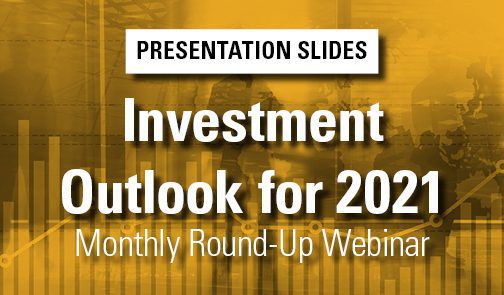Coronavirus’ Impacts On Real Estate: Why You Need To Think Short-Term And Longer-Term

Originally published on Forbes.com
The real estate industry is being clobbered by the coronavirus, and it’s going to get worse before it gets better. The effects on real estate will vary by sector and market, and the extent of the effects will depend upon the duration of the economic shutdown.
The sectors of real estate that have been hit hardest so far are hotels, restaurants, bars and other entertainment retail (particularly in tourist-driven areas) followed closely by retail and housing (particularly second-home and luxury homes).
Supplies that the builders and developers need are being interrupted more and more as workers stay home, and due to business shutdowns, quarantines and curfews. Huge numbers of layoffs will lead to further contraction in consumer spending, starting a downward spiral of economic activity. Together, these forces are already pushing the economy into recession.
China’s factories and businesses are now re-starting, which could be cause for optimism regarding a fairly rapid return to normal economic activity and strong real estate markets. That said, China took swift steps that the United States is only slowly and begrudgingly taking now. There are a lot of moving parts, so let’s dig deeper.
Impact Will Be Different Regionally
The impact of the economic disruption in real estate varies, and is going to continue to vary, from one state or metro area to another. Florida, for example is exposed across a number of important industries, including:
- Hotels
- Theme Parks
- Conference Centers
- Casinos
- Sports Venues
- Restaurants and Bars
- Cruise Ships
Additionally, it remains to be seen how Florida’s congregate senior housing industry will be impacted.
The tourism industry will be hit in two different ways: (1) a direct impact from contagion concerns and (2) an indirect impact from declines in stock values and reduced income which will translate into people feeling less wealthy and put a damper on travel.
In Texas markets the coronavirus’ economic impacts are compounded by the effects of the oil price collapse. Low oil prices are impacting oil producers, which will bring economic drag to certain parts of Texas. At the same time, social distancing efforts are hammering hotels, sports venues, and restaurants and bars. In Harris County, TX, every restaurant in the county must offer only delivery, pick-up and drive-thru service and close for sit-down meals for at least 15 days. All bars and clubs must close for this time period, likely to be extended.
The Impact on Housing and Homebuilding
Housing data have not shown a large drop yet, but homebuilders are feeling not only the demand pullback from home shoppers staying home in droves, but also the supply impact of materials that they normally import from China.
Builders are already reporting lower sentiment, but bear in mind that half of the National Association of Home Builders (NAHB) sentiment index responses were collected prior to March 4th, so the stock market gyrations and still-mounting impacts from the contagion were only partially reflected. The sentiment report due out next month will likely show a much steeper drop.
About 30% of materials used in homebuilding come from China, according to data from F.W. Dodge, so the speed at which the factories in that country get back to full capacity and the delivery networks are restored, is crucial to the builders. More than 20% of builders who were just surveyed reported some disruption in supply due to virus concerns; NAHB says that the percentage is higher than this for builders who gave their response after March 6th.
Builders are generally seeing significantly lower traffic through their sales centers, some of which could be just a delay related to short-term social distancing efforts, but some of it is assuredly an actual reduction in demand due to buyer feelings of economic insecurity. Builders are saying that land acquisition and development will slow in the near term.
Even more worrisome is the impact that the stock market crash will have on consumer spending. People who have lost a lot of their “paper” wealth will spend less on discretionary items, and those who are retired, or close to retirement, may be drastically changing their spending plans. Those who had been planning to buy a home in an active adult community may have to shift their plans, and that could impact absorption rates at those developments. Needless to say, there could be a serious impact on nursing homes and assisted-living facilities as well, at least in the near term.
The rental apartment industry is now preparing to deal with tenants who have lost their income and are unable to make the current month’s rent. Landlords should seek to emphasize occupancy, which might mean giving tenants some leniency in the near term. The long-term outlook for rentals is still bright, however, in light of demographic shifts that are still unfolding. The single-family-built-for-rent business might be a long-term beneficiary as we may see a shift toward larger units that better accommodate working from home.
Other Sectors of Real Estate Development
The impacts on retail development are obvious in the near term. Restaurants and stores are unable to generate anything more than a fraction of their normal revenue. Magnifying this is a ripple effect through the economy as landlords brace themselves for a flood of requests for rent relief from their tenants. It remains to be seen how much leniency or relief landlords themselves will get.
The longer-term impacts are less obvious. It is conceivable that after the virus runs its course, the retail sector will snap back, and the effect on future retail and entertainment-related development will be minor in the long run. The key to this is how long (and/or how often) social distancing is in effect.
In the case of the office sector, most office space is empty under social distancing, but one could imagine that after the health crisis subsides, offices will be occupied again. The long-term question is whether the work-from-home shift will stick to some degree. Some workers will use the experience of the coronavirus crisis to convince their employers that they can be efficient and productive from their homes (although many will prefer to return to the office environment). The more crucial determinant of office demand, however, is simply sheer job growth. If the recession extends and deepens more than expected, then the need for new office space will be low for a while, but if it is a deep-but-short recession, then demand for new office space should resume as soon as job generation does.
Industrial and warehouse space is feeling short-term impacts from interruptions in the shipping “supply chain,” but the long-term effect on this sector of real estate could be bullish. To the extent that this experience encourages more online shopping in the years that follow, warehouse development could be stimulated.
Policy Effects
Huge and eerily familiar policy levers are being thrown, but this is being done at a level none of us have ever seen before. The Federal Reserve Board just opened the door to unlimited quantitative easing, and they are preparing to buy large sums of commercial mortgage-backed securities. Fiscal stimulus of enormous magnitude is expected to be coming (once a deal is agreed upon), as well.
These measures are important, but it is also important that government rules and policies not be allowed to hinder the recovery. Concern has been expressed by insiders in the commercial real estate investment industry that a liquidity problem could occur due to policies that are in place. Mark-to-market accounting rules contributed to the depth and length of the housing collapse in the late 2000s, and it will be important to make sure that a similar downdraft does not emerge this time in the commercial lending market, potentially deepening the decline this time around.
What Lies Ahead For Real Estate?
One thing that makes this economic disruption especially problematic is that it is affecting both demand and supply.
On the demand side, the answer to “what lies ahead” depends on how quickly the outbreak will be contained, meaning when the rate of growth in new cases flattens out and begins to fall off. At that time consumers will start spending again, and the economic engine will start humming once more. The disruption to the supply side this time may take longer to restore, particularly if the outbreak is not contained evenly across the globe, and thus may lag the bounce back in demand, which may in itself have some negative consequences.
The optimistic scenario is that unlike in the Great Recession, once the virus is contained, and immunity starts to take hold in the population, even though supply chains will take some time to re-engage, it may not feel like the cold-start that followed the housing and mortgage crash. The cycle could look like a “V,” or possibly more of a narrow “U,” with a sharp drop but also a strong upswing, coming at some time in the second half of this year. There will be a return at some point of pent-up demand, from people who were unable during the lockdown to go out and buy furniture for their home, get their house painted or plumbing fixed, or, on the industrial side, build structures and install equipment needed for business. And vacations that were put on hold will finally happen, boosting the hotels and theme parks.
The number of confirmed virus cases flattened out in China, and China is starting to see a resumption of normal business activity. Italy and other countries have yet to see a sustained flattening or drop. Data from companies like Federal Express and Uber in their operations in China indicate that 65%-70% of small businesses there are open again, and 90%-95% of large manufacturers are operating again. This implies that the economic ‘restart’ could be quicker than after the housing and financial collapse. The first quarter GDP growth number for China is expected to be zero or negative, but the second or third quarter may show improvement. In the U.S., it is clear that the second quarter will be negative, but growth could resume some time in the second half of the year. That however assumes that we are successful with social distancing.
The problem too is that once the virus subsides in the population, it is likely to surge back again later this year, meaning that social distancing may have to be practiced off-and-on for the next 18 months. A sophisticated study utilizing epidemiological modeling, undertaken by the Imperial College in London, was just released, finding:
“To avoid a rebound in transmission, these [social distancing] policies will need to be maintained until large stocks of vaccine are available to immunize the population – which could be 18 months or more. … However, there are very large uncertainties around the transmission of this virus, the likely effectiveness of different policies and the extent to which the population spontaneously adopts risk reducing behaviors. This means it is difficult to be definitive about the likely initial duration of measures which will be required, except that it will be several months.”
This is clearly a serious threat to commerce, profits, jobs, and, ultimately, real estate. The duration of the downturn will be the key determinant of how long and in what ways the real estate markets suffer.
The silver lining for real estate companies? As happened at the bottom of the housing crash, real estate investors with a long view will find opportunities to pick up assets at distressed prices, and with financing rates lower than most of us have seen in our careers. Just as large funds stepped in to buy land and homes when values were depressed, we will likely see similar moves among the distress that is now taking shape. Such investors should be sure to make any such purchases with a studious eye and careful due diligence.
Article and research prepared by Brad Hunter, Managing Director.
Disclaimer: Reasonable efforts have been made to ensure that the data contained in this Advisory reflect accurate and timely information, and the data is believed to be reliable and comprehensive. The Advisory is based on estimates, assumptions, and other information developed by RCLCO from its independent research effort and general knowledge of the industry. This Advisory contains opinions that represent our view of reasonable expectations at this particular time, but our opinions are not offered as predictions or assurances that particular events will occur.
Related Articles
Speak to One of Our Real Estate Advisors Today
We take a strategic, data-driven approach to solving your real estate problems.
Contact Us









